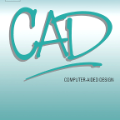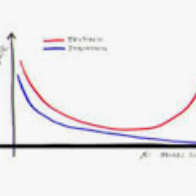Unlike many other works, where authors are usually focused on one or two quality criteria, the current manuscript, which is a generalization of the article [35] published in Russian, offers a multi-criteria approach to the assessment of the shape quality of curves that constitute component parts of the surfaces used for the computer modelling of object shapes in various types of design. Based on the analysis of point particle motion along a curved path, requirements for the quality of functional curves are proposed: a high order of smoothness, a minimum number of curvature extrema, minimization of the maximum value of curvature and its variation rate, minimization of the potential energy of the curve, and aesthetic analysis from the standpoint of the laws of technical aesthetics. The authors do not set themselves the task of giving a simple and precise mathematical definition of such curves. On the contrary, this category can include various curves that meet certain quality criteria, the refinement and addition of which is possible in the near future. Engineering practice shows that quality criteria can change over time, which does not diminish the need to develop multi-criteria methods for assessing the quality of geometric shapes. Technical issues faced during edge rounding in 3D models that affect the quality of industrial design product shape have been reviewed as an example of the imperfection of existing CAD systems.
翻译:与其他许多作品不同,作者通常侧重于一种或两种质量标准,而目前的手稿是用俄文出版的[35]条的概括性[35]条,它为评估构成各种设计对象形状的计算机建模所用天体形状表层组成部分组成部分的曲线的形状质量提供了一种多标准的方法。根据对曲线路径沿线点粒子运动的分析,提出了功能曲线质量要求:高度顺畅的顺序、最起码的曲律极限数、最大限度地减少曲线的最大值及其变异率、最大限度地减少曲线的潜在能量以及从技术审美学法的角度进行美学分析。作者并没有为自己设定对此类曲线进行简单和精确的数学定义的任务。相反,这一类别可以包括符合某些质量标准的各种曲线,这些质量标准在近期内有可能得到完善和补充。工程实践表明,质量标准可以随着时间而改变,这不会减少为评估几何形状质量质量制定多标准方法的必要性,减少曲线的潜在能量,以及从技术审美学法角度的角度分析。在CAD的边缘设计过程中,技术问题影响到了现有的CAD结构的边缘结构。




